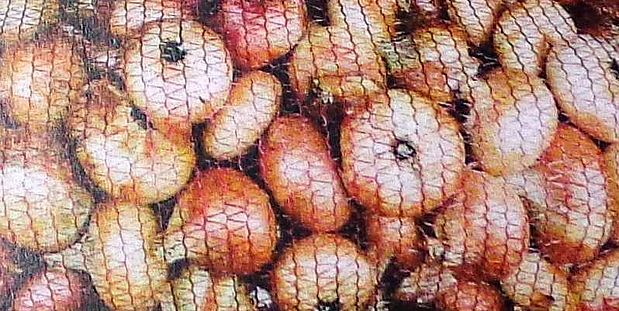Decades ago, Zenica used to be known for its steel industry and coal mines. Actually, the town itself was heavily dependant on coal and steel industry since the Austro-Hungarian rule in late 19. and early 20. Century. Later on, the industry was steadily attracting ever larger number of workers who came to Zenica in search of employment and in an attempt to escape poverty of the peasants’ life where the produce and yield were heavily dependent not only on human work but on a number of rainy or sunny days. So, we might well say that moving to Zenica for those people offered a chance to have a little bit more certain and less risky prospects for earning one’s daily bread.
Yet, despite the fact that in late 1980s the coal and steel industry employed as much as 25,000 people, that urge for farming and producing one’s own food never completely vanished. Along with going to factory and working at the rolling machines, the steelmakers also had some homesteads to run, some livestock to take care of and some meadows to grow fodder for their cattle. In the process, our agricultural experts has observed a specific line of onion which was particularly explained and detailed by a team of scientists and presented at the 7th International Symposium on Agriculture held in Opatija, Croatia back in 2012.
Here are the main characteristics of the Zenica’s onion (Zenički luk) presented in the paper titled:
“Characteristics of a new onion line” by
Josip ĆOTA1, Jelica GVOZDANOVIĆ-VARGA2, Mustafa ĐELILOVIĆ1, Mirjana VASIĆ2,
Janko ČERVENSKI2, Jelena ĆOTA3
1Federal Department of Agriculture, Butmirska cesta 40, Ilidža, 71000, Sarajevo, Bosnia and Herzegovina
2Institute of Field and Vegetable Crops, Maksima Gorkog 30, 21000 Novi Sad, Serbia
(e-mail: jelica.varga@ifvcns.ns.ac.rs)
3Pharmaceutical Faculty, Vojvode Stepe 450, 11000 Belgrade, Serbia
Abstract
“Onions are used year round, either fresh (green onions, mature bulbs) or processed (dehydrated, canned). Each type of use requires a specific cultivar and production technology.Only a correct choice of cultivar ensures high yield and quality.
The paper reviews the characteristics of a new line of onion (Zenički) developed at the Federal Department of Agriculture in Sarajevo and its performance in Bosnia and Herzegovina. Tests were conducted for three years (2008, 2009, and 2010) in two locations (Sarajevo-Butmir; Ravno-Velja Međa). The trials were conducted in a randomized block design with five replications. The following production characteristics were tested: bulb weight, shape, bulb skin tightness and colour, plant height, length of growing season, and yield of bulbs. The tested quality characteristics included dry matter content, total sugars and acids content. The cultivar Stuttgarter was used as the check.
The bulb of the new line was found to have yellow-brown bulb skin, flat shape (index – 0.68), and an average weight of 109.85 g. The length of the growing season was 115 days. The line had high quality – the dry matter content was 14%, total sugars were 8.87%, and the taste was slightly pungent. The three-year average yield for both locations was 27.48 t/ha, which was 14.73% above the yield of the check.”
As you see, though Zenica was an unlikely place to offer a new variety of onion, it is there for the local people and experts alike to try and do everything in their power to have it properly identified and branded as well as to make sure the organized production, purchase and marketing is put in place for the benefits of all participants along the market chain. This year’s city budget includes some small amount of funds as an incentive for comprehensive work on branding of this specific cultivar. These activities are yet to get momentum in the months to come.
See photos here.







